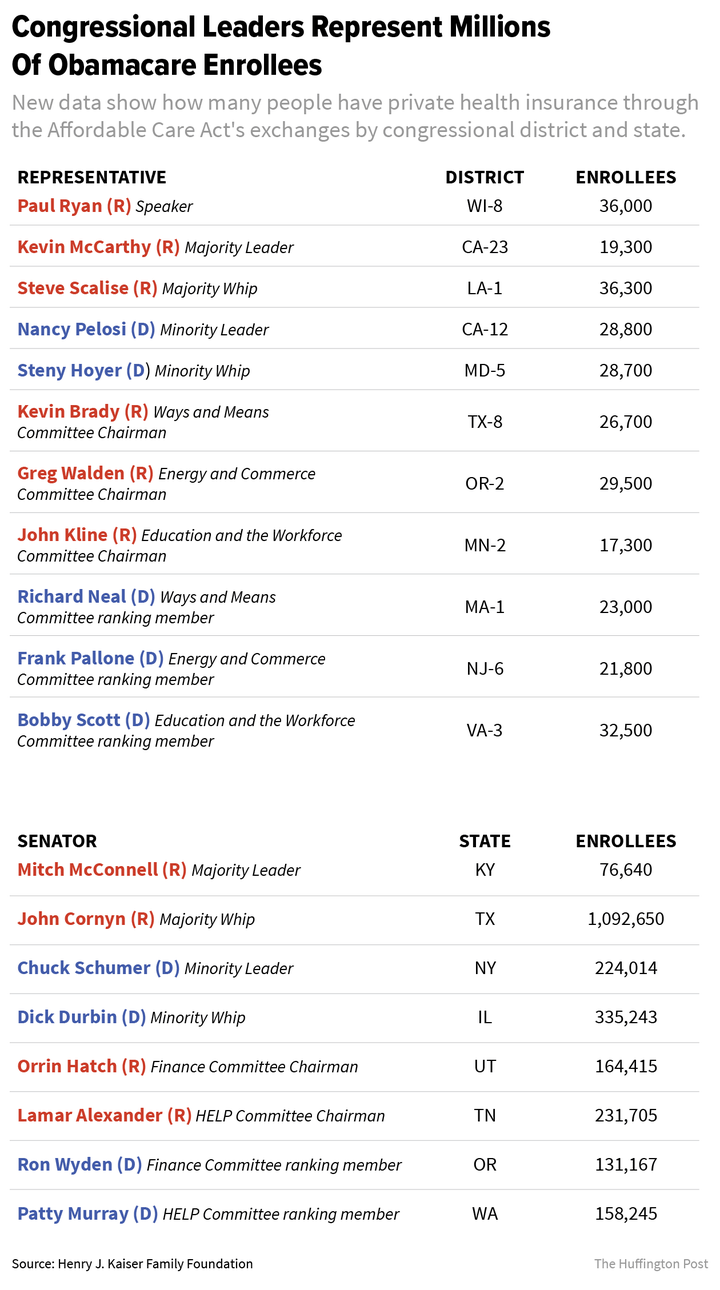WASHINGTON ― At his first post-election press conference on Wednesday, president-elect Donald Trump said he will release his own plan to “repeal and replace” the Affordable Care Act shortly after taking office. What he didn’t say is what that plan will be or how it will work.
After Election Day, Trump and Republican leaders in Congress immediately started laying out a plan to repeal the health care reform law President Barack Obama enacted in 2010 that has reduced the national uninsured rate to its lowest level ever. So far, they have failed to tell the public what they would rather do instead.
If Trump actually follows through on his vow, his will be providing one of a growing number of competing ― and vague ― GOP proposals to remake the health care system, which doesn’t portend rapid action in Congress.
Trump said his new administration will present its ideas about health care reform after Rep. Tom Price (R-Ga.) is confirmed as secretary of the Department of Health and Human Services.
“We’re going to be submitting, as soon as our secretary is approved ― almost simultaneously, shortly thereafter ― a plan,” he said. “It’ll be repeal and replace. It will be essentially simultaneously. It will be various segments, you understand, but will most likely be on the same day or the same week, but probably the same day ― could be the same hour.”
Yet congressional Republicans are in increasing disarray about when and how to take on the Affordable Care Act, commonly known as Obamacare, so there’s reason to doubt the president-elect’s assertion that Congress could act on his unseen health care proposals the same day, or even the same hour, that he sends them to Capitol Hill.
Trump called his plan “very complicated stuff,” but insisted, “We’re going to get a health bill passed, we’re going to get health care taken care of in this country.”
“You’re going to be very, very proud of what we put forth having to do with health care,” he added. “We’re going to have a health care that is far less expensive and far better.”
These are easy promises to make and very difficult promises to keep ― not least because, as Trump noted, health care policy is complicated. And his previous statements and proposals make it impossible to guess what he really wants to do.
“The only thing consistent about Trump's views is that whatever comes after the Affordable Care Act will be 'terrific' and 'better' and 'less expensive.'”
Trump’s positions on what the health care system should look like have shifted wildly since his presidential campaign began.
At times, he’s promised government-funded universal health care and praised Canada’s single-payer system. He’s also talked about letting health insurers set up shop in states with the laxest regulations and allowing them to sell skimpy policies by “getting rid of the lines” between the states.
After winning the election, Trump revised his proposals to bring them closer to orthodox Republican ideas like cutting Medicaid funding and promoting tax-free health savings accounts. The only thing consistent about his views is that whatever comes after the Affordable Care Act will be “terrific” and “better” and “less expensive.”
And Congress is nowhere close to being in a position to advance a new set of health care reforms at the same time it votes to undo the Affordable Care Act because Republicans can’t agree on the procedural steps, let alone the policy they would put in place. After years of attacking Obamacare, the GOP has never even reached a consensus about what the goals of health care reform are.
The Affordable Care Act sought to reduce the uninsured rate, to implement stronger consumer protections, including guaranteed coverage for people with pre-existing conditions, and to provide financial assistance to low- and middle-income people who couldn’t afford health coverage in the past.
The law plainly succeeded on the first two counts, but has had mixed success on the third. Subsidies cut off for people earning four times the federal poverty level ― which is $48,000 a year for a single person ― leaving families who aren’t wealthy to pay the full premium for their health insurance. That burden increased this year when rates increased much more than during the first three years of Obamacare enrollment.
“We don’t want to own it politically.”
- President-elect Donald Trump, referring to Obamacare
At his press conference on Wednesday, Trump lamented that some Obamacare plans carry very high deductibles that reduce their value for people who’d have to spend thousands of dollars out of pocket before their benefits kick in.
“You have deductibles that are so high that after people go broke paying their premiums ― which are going through the roof ― the health care can’t even be used by them because the deductibles are so high,” Trump said.
That’s true for a portion of people who have this coverage. But the cumulative impact of all plans conservative intellectuals and Republican lawmakers are circulating would be to expose people to even higher out-of-pocket medical costs.
And none of the policy outlines Republicans have promoted would dedicate the level of funding required to maintain what the Affordable Care Act already does, let alone make insurance cheaper and available to more people.
This includes Price’s plan, which would claw back regulations on the insurance industry, effectively allowing companies to cover fewer services and impose higher co-pays and deductibles ― and making it harder for people with pre-existing conditions to get decent coverage in the first place.
Throw in the fact that Price’s proposal, like all Republican plans, would dramatically cut funding for Medicaid, which provides insurance to millions of low-income Americans, and the result would be more crippling medical bills for the American public, not fewer.

Democrats oppose the idea of Price assuming leadership of Health and Human Services and have raised ethics questions about the physician and six-term lawmaker’s investments in health care companies, but he will likely enjoy enough support from Senate Republicans to be confirmed.
The Senate Finance Committee hasn’t scheduled Price’s confirmation hearing, but he is expected to appear before the Health, Education, Labor and Pensions Committee next Wednesday.
Trump, meanwhile, has been clearer on his political calculations than he is on his policy wish list. The way he describes it, he and the GOP are generously offering to relieve Democrats of the problems the Affordable Care Act created or failed to solve. In his stated view, the best political course for Republicans would be to do nothing and allow Obamacare’s shortcomings to mount so they can blame Democrats for enacting it in the first place.
“We don’t want to own it politically. They own it right now,” Trump said.
That’s an unusual view of how the public might react to the collapse of the health insurance system during a time when the Republican Party controls the entire federal government and most state capitals.
The Urban Institute projects that congressional GOP leaders’ preferred plan ― dubbed “repeal and delay” because they would pass legislation to repeal major parts of Obamacare but leave most of them in place for up to four years while they devise a new policy ― could destabilize the health care system and result in as many as 30 million people losing their health benefits.
Moreover, Trump ― like other Republicans, including House Speaker Paul Ryan (Wis.) ― overstates the current difficulties facing the Affordable Care Act’s health insurance exchanges.
“Obamacare is a complete and total disaster,” Trump said. “ It’s imploding as we sit.” Trump predicted that 2017 would be “the bad year” and “catastrophic.”
This is at odds with the latest evidence.
The Department of Health and Human Services reported Tuesday that enrollment on the exchanges for this year, which ends Jan. 31, is ahead of where it was at this time last year. The ratings agency Standard & Poor’s reported last month that the financial status of health insurers participating in the exchanges is improving ― after many suffered losses last year ― and projected that these marketplaces and the prices consumers pay will stabilize in the future.


